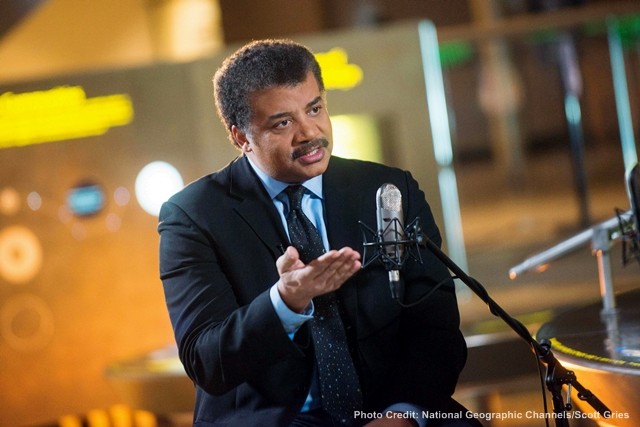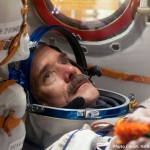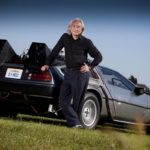
By Jae-Ha Kim
Tribune Content Agency
May 12, 2015
Astrophysicist Neil deGrasse Tyson never dreamed that he would grow up to be a television personality. Besides having guested on shows such as “The Big Bang Theory” and “Stargate: Atlantis,” he is the host of the National Geographic Channel’s “StarTalk.”
“For me growing up, the night sky was at the local planetarium,” says Tyson, 56, who resides in New York. “There’s no other way I would’ve been able to see it.” Laughing, he adds, “I want to write a novel one day where the plot will include a group of amateur astronomers. During a blackout that always seems to happen in big cities, people will go outside and be forced to look up to really see the night sky for the first time.”
Fans may follow Tyson on Twitter.
Q. When you hear people say that the sky is more beautiful in a certain part of the world, what do you say?
A. The sky is beautiful everywhere. But the beautiful night skies in big cities like Beijing or New York City aren’t comparable to certain parts of the world.
Q. Why is that?
A. People think Australia has the best sky. That’s because nobody lives in Australia other than 10 people! (Laughs) When people from Europe or the United States visit the Southern Hemisphere, the first thing they notice or say is that the sky is so beautiful. But they’re not asking why. It just somehow inherently seems more beautiful. It’s because most people live in the Northern Hemisphere where you find tons of people, and in areas with a lot of people, you find a lot of lights. By going south, you are escaping the light pollution and fog that has turned the Northern Hemisphere star-watching into something like looking through muddy water.
Q. With that said, where can people who can’t get to the Southern Hemisphere head to for star-gazing?
A. Try to head to the top of any mountain. The atmosphere is what contains pollen. As you ascend a mountain, the night sky becomes clearer and clearer and you’re less frequently affected by a low lying weather pattern. Another good place is the desert, which by definition has low rainfall. That means you don’t get as many clouds. There are fewer particles to block the view as you view the night sky. If you have to put a telescope somewhere, doing it in the desert is the next best thing.
Q. Where have you traveled to that was breathtakingly beautiful?
A. My Ph.D. research was at the Cerro Tololo Inter-American Observatory in Chile. There were times when we were at the top in the clouds. It felt like you were sitting on an island in heaven with a little bit of moonlight reflecting the clouds. Talk about stunning! The phrase “other-worldly” has a new meaning there.
Q. Where are you recognized the most, other than the United States?
A. When we were filming “Cosmos: A Spacetime Odyssey” in London, I’d be stopped hundreds of times a day. But almost every person was a tourist from Germany, Scandinavia, Spain or South America. Brits had no idea who I was, because there is someone much more famous than I am there. Brian Cox is a physicist with this long Beatles haircut. Talk about a rock star physicist. He literally used to play in bands. He’s sort of the voice of scientific reason in the United Kingdom. They all know him there. Only the tourists knew me. I once gave a talk at an American Embassy in Jamaica. We went to get some meat patties afterward and I saw a person walking in the street toward me. He recognized me as the “Cosmos” guy. But if Brian was there, he probably would’ve headed for him. (Laughs)
Q. What is on your travel bucket list?
A. I’ve yet to go to the Middle East. It’d be nice if it was a little more stable now. I want to visit the Holy Land. I want to see what has attracted people’s religious fervor. I really enjoy learning about how people think. I’ve yet to get to Antarctica. India is high on my list. I want to visit the South Pacific. I like their seaworthiness and how they developed a way to go from island to island. Very high on my list is to get to the moon and Mars. I don’t want to just do a suborbital thing where you go up and come down.
Q. Aren’t you frightened of the possibility that you might get stuck up there?
A. We all do a personal calculation when there are risks. If you do something that risks your health, the turnaround has to be an activity that would make an extraordinary life experience and, for me, that would be one of them. Anyhow, I would go after Richard Branson sent his daughter or another beloved family member. After she came back, I’d go because then you figure it’d be pretty safe. (Laughs)
Q. What was the first trip you took as a child?
A. I traveled early and was a little spoiled by it all. I felt privileged as a child. At age 14, I received a scholarship from the Explorers Club to go on a ship off the coast of South Africa to observe a total solar eclipse. We were on a luxury liner refitted to be a scientific floating observatory. It was wonderful. I attended lectures and shot photos with my camera. I met Neil Armstrong. This was a few years after he walked on the moon. I met Isaac Asimov. Going on a mobile platform, if you learned it was going to be cloudy, the ship can move to a better position to see the moon. A year later, I went on an expedition to Stonehenge and other stone monuments. They brought archaeologists and astronomers and we studied alignments that had already been established. It was pretty amazing.
© 2015 JAE-HA KIM
DISTRIBUTED BY TRIBUNE CONTENT AGENCY, LLC.






you interviewed him! that’s so cool! both of you are so awesome ^^
Thank you! I think one of us is slightly more awesome than the other, but he’s OK. 😉 JUST KIDDING! He is easily one of the most human beings on the planet! 🙂
Ohhhh so cool! Lucky!!
LUCKY!!Q!
Hahaha, for an astrophysicist he is pretty down to earth (pun intended.)
My son Mateo admires him which led us to visit the planetarium museum in NYC.